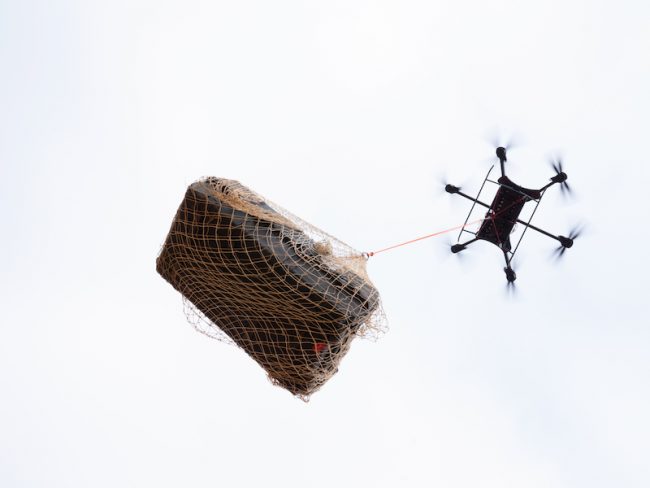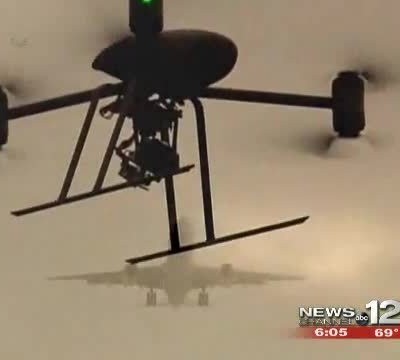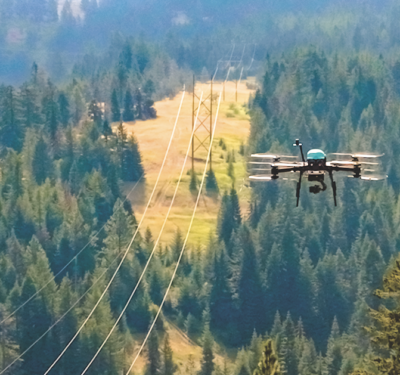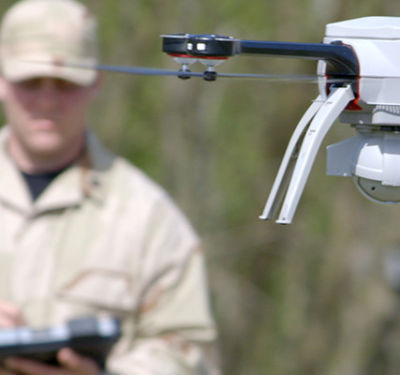
ZM Interactive’s Dragon H500, delivering a cargo pallet.
In December, ZM Interactive announced the latest in what might be thought of as its Swiss Army knife drone. The xFold Dragon line features multiple sizes that can lift up to 1000 pounds. Pilots can switch from quad to up-to-dodeca-arms, with those extensions able to carry various motor types. And a gas-electric Hybrid adds significant time in the air.
“All our drones have the same design, even the smaller ones,” ZMI CEO Ziv Marom explained to Inside Unmanned Systems. “The regular Dragon is under 55 pounds. One size bigger is the Dragon H—’H’ is for heavy. And then H100, 300, 500, 1000—that’s basically payload.” The larger vehicles are used for more industrial applications, and the nomenclature helps with military standardization.
Moreover, the Dragon Hybrid can fly for 1.5 hours on battery and significantly longer with a gas-electric power system. “The drone has the same electric motors, but there is a gas engine that provides enough power to power the drone and also charge the battery on board,” Marom said. “We’re using our hybrid more for mapping, where it can do six, even eight, hours, under 55 pounds.”
Dragons can be customized in minutes, conformed for deliveries, or as ag sprayers, fire-fighting extinguisher ball droppers and 3D mappers, among others. “We can configure the model depending on the mission or the application,” Marom explained. “You can basically put more arms on the side, and then from four arms, it goes to hex, eight and up to 12.” Motors can be put on each arm, or doubled up top and bottom. Even propeller pitch can be mission-configured.
To exemplify this shape-shifting, Marom referenced a client that was doing a powerline test. “Using small sensors, they can fly the hybrid product for multiple hours and just inspect the line. But sometimes they’re in a remote area, and they basically need to deliver cables or utilities to the other side of the mountain. They put arms on with larger motors. So you have a lot less gear that you need to take with you.
“The same drone can basically achieve different applications, and that’s in minutes.”
Equines to “Matrix Four”

ZM Interactive CEO Ziv Marom.
CEO Marom has an eclectic background. He handled simulations and robots while serving in an elite intelligence unit in Israel, and also became a champion equestrian there. Moving to New York, he worked in visual effects and motion graphics for TV commercials. And he shifted from classic and Spanish guitar to play in rock bands. “I kind of like change, from one thing to another,” he said. “Now it’s in drones.”
Marom’s autonomy interests accelerated about 15 years ago in New York, initially around filming. “A lot of the shots that we did with cameras were either with big cranes or real helicopters. That was great, but super-limited. So I basically built a drone out of the little bit of background that I had from robotics, that would be larger and stronger to be able to fly those heavier cinema cameras.
“Then, when I moved to San Francisco, I just worked with different creative agencies and production companies. We did a lot of feature films.”
ZMI was founded in 2015 to work autonomously in that space, with Marom continuing to multitask as CEO, aerial director of photography and pilot. “We did drones for cinema—we got an Emmy Award for some of the documentaries that we did—and we did Hollywood films, and that was great. The basic Dragon is actually the one that we’re using in cinematography, which is under 55 pounds” Marom continued. “It’s the most efficient, and it can fly for 30 minutes with a big camera—pretty good for this type of drone.”
Then horizons expanded. “We saw that this technology can actually help a lot with different applications such as search and rescue. I started to build it bigger and bigger. You can still fold it and put it back of your SUV, but it will be strong enough to lift a human—either to deliver a medic into a disaster area or bring back someone who is stuck there.”
From “Matrix Four” to Window Washing
Recent film projects have included the much-anticipated “Matrix Four.” “Most of [the business] is industrial, for mapping and things like that, but also big features—it’s my passion; I did it for a long time,” Marom said. “Our drone services team does commercial and industrial work—“we kind of use the services to sell the platform.”
ZM Interactive’s future literally involves growth. “Something we’re actually going to work for next year is to have a few drones flying together, lifting something even bigger,” he said. “The drones we’re working with right now can lift 500 pounds, and now we’re going to lift 1000 pounds. It’s not just the weight, it’s also working on the flight time. One of the applications we’re working on now is 100 kilos for 15-20 minutes flight time on batteries. Working with the Navy, they obviously want to deliver cargo to vessels. So we developed a combination of different engines that are hybrid, and are testing that to get longer flight time on the large payloads as well.”
It takes more than super-sizing to build these heavy lifters. “It’s not just bigger models,” Marom said. “The frame is very important, the software. We are focusing on working under ISO 9000. If you built one or 200, all of them are exactly the same; that’s very important to work with the military.” No Chinese components are used when the Dragons are assembled in Northern California, easing governmental sales.
New applications continue to come forward. “We’re working with a company that pulls electric lines. And we’re also getting really crazy applications. One guy asked if we can basically lift air conditioners to the floors in a high-rise where they are building.
“In Dubai, they want to work with us on window cleaning. Now they’re climbing and doing it manually. They have a lot of dust there.” A visit to the Gulf to check out that project was COVID-canceled. “Hopefully next year,” Marom said. Until then, a Dragon demo scheduled for January 2021 will feature heavy cargo delivery, including to offshore vessels and search-and-rescue operations
Photos courtesy of ZM Interactive.






